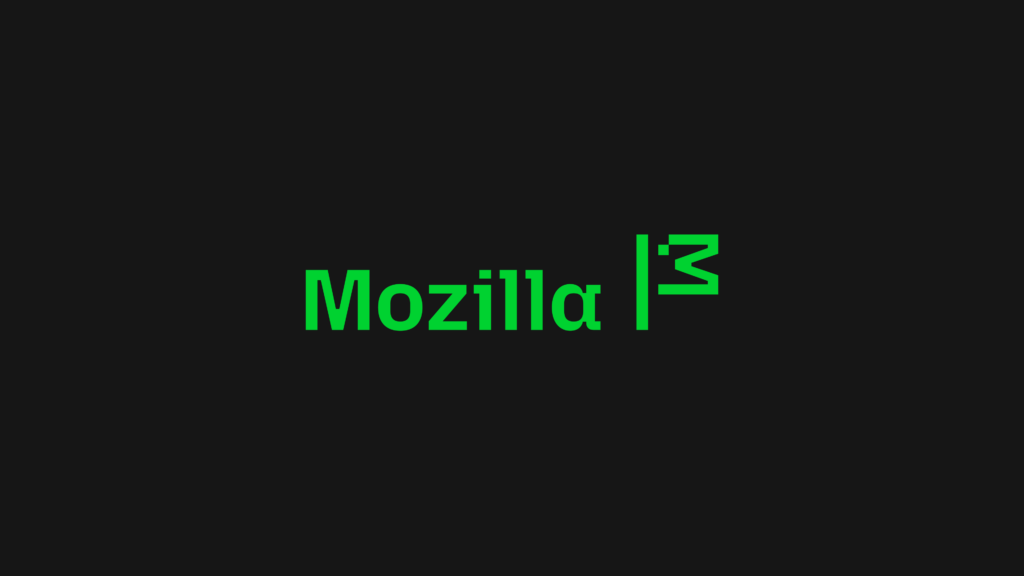
AI isn’t just another tech trend — it’s at the heart of most apps, tools and technology we use today. It enables remarkable things: new ways to create and collaborate and communicate. But AI is also letting us down, filling the internet with slop, creating huge social and economic risks — and further concentrating power over how tech works in the hands of a few.
This leaves us with a choice: push the trajectory of AI in a direction that’s good for humanity — or just let the slop pour out and the monopolies grow. For Mozilla, the choice is clear. We choose humanity.
Mozilla has always been focused on making the internet a better place. Which is why pushing AI in a different direction than it’s currently headed is the core focus of our strategy right now. As AI becomes a fundamental component of everything digital — everything people build on the internet — it’s imperative that we step in to shape where it goes.
This post is the first in a series that will lay out Mozilla’s evolving strategy to do for AI what we did for the web.
What did we do for the web?
Twenty five years ago, Microsoft Internet Explorer had 95% browser market share — controlling how most people saw the internet, and who could build what and on what terms. Mozilla was born to change this. Firefox challenged Microsoft’s monopoly control of the web, and dropped Internet Explorer’s market share to 55% in just a few short years.
The result was a very different internet. For most people, the internet was different because Firefox made it faster and richer — and blocked the annoying pop up ads that were pervasive at the time. It did even more for developers: Firefox was a rocketship for the growth of open standards and open source, decentralizing who controlled the technology used to build things on the internet. This ushered in the web 2.0 era.
How did Mozilla do this? By building a non-profit tech company around the values in the Mozilla Manifesto — values like privacy, openness and trust. And by gathering a global community of tens of thousands — a rebel alliance of sorts — to build an alternative to the big tech behemoth of the time.
What does success look like?
This is what we intend to do again: grow an alliance of people, communities, companies who envision — and want to build — a different future for AI.
What does ‘different’ look like? There are millions of good answers to this question. If your native tongue isn’t a major internet language like English or Chinese, it might be AI that has nuance in the language you speak. If you are a developer or a startup, it might be having open source AI building blocks that are affordable, flexible and let you truly own what you create. And if you are, well, anyone, it’s probably apps and services that become more useful and delightful as they add AI — and that are genuinely trustworthy and respectful of who we are as humans. The common threads: agency, diversity, choice.
Our task is to create a future for AI that is built around these values. We’ve started to rewire Mozilla to take on this task — and developed a new strategy focused just as much on AI as it is on the web. At the heart of this strategy is a double bottom line framework — a way to measure our progress against both mission and money:
| Double bottom line | In the world | In Mozilla |
| Mission | Empower people with tech that promotes agency and choice – make AI for and about people. | Build AI that puts humanity first. 100% of Mozilla orgs building AI that advances the Mozilla Manifesto. |
| Money | Decentralize the tech industry – and create an tech ecosystem where the ‘people part’ of AI can flourish. | Radically diversify our revenue. 20% yearly growth in non-search revenue. 3+ companies with $25M+ revenue. |
Mozilla has always had an implicit double bottom line. The strategy we developed this year makes this double bottom line explicit — and ties it back to making AI more open and trustworthy. Over the next three years, all of the organizations in Mozilla’s portfolio will design their strategies — and measure their success — against this double bottom line.
What will we build?
As we’ve rewired Mozilla, we’ve not only laid out a new strategy — we have also brought in new leaders and expanded our portfolio of responsible tech companies. This puts us on a strong footing. The next step is the most important one: building new things — real technology and products and services that start to carve a different path for AI.
While it is still early days, all of the organizations across Mozilla are well underway with this piece of the puzzle. Each is focused on at least one of three areas of focus in our strategy:
| Open source AI — for developers | Public interest AI — by and for communities | Trusted AI experiences — for everyone |
| Focus: grow a decentralized open source AI ecosystem that matches the capabilities of Big AI — and that enables people everywhere to build with AI on their own terms. | Focus: work with communities everywhere to build technology that reflects their vision of who AI and tech should work, especially where the market won’t build it for them. | Focus: create trusted AI-driven products that give people new ways to interact with the web — with user choice and openness as guiding principles. |
| Early examples: Mozilla.ai’s Choice First Stack, a unified open-source stack that simplifies building and testing modern AI agents. Also, llamafile for local AI. | Early examples: the Mozilla Data Collective, home to Common Voice, which makes it possible to train and tune AI models in 300+ languages, accents and dialects. | Early examples: recent Firefox AI experiments, which will evolve into AI Window in early 2026 — offering an opt-in way to choose models and add AI features in a browser you trust. |
The classic versions of Firefox and Thunderbird are still at the heart of what Mozilla does. These remain our biggest areas of investment — and neither of these products will force you to use AI. At the same time, you will see much more from Mozilla on the AI front in coming years. And, you will see us invest in other double bottom line companies trying to point AI in a better direction.
We need to do this — together
These are the stakes: if we can’t push AI in a better direction, the internet — a place where 6 billion of us now spend much of our lives — will get much much worse. If we want to shape the future of the web and the internet, we also need to shape the future of AI.
For Mozilla, whether or not to tackle this challenge isn’t a question anymore. We need to do this. The question is: how? The high level strategy that I’ve laid out is our answer. It doesn’t prescribe all the details — but it does give us a direction to point ourselves and our resources. Of course, we know there is still a HUGE amount to figure out as we build things — and we know that we can’t do this alone.
Which means it’s incredibly important to figure out: who can we walk beside? Who are our allies? The there is a growing community of people who believe the internet is alive and well — and who are dedicating themselves to bending the future of AI to keep it that way. They may not all use the same words or be building exactly the same thing, but a rebel alliance of sorts is gathering. Mozilla sees itself as part of this alliance. Our plan is to work with as many of you as possible. And to help the alliance grow — and win — just as we did in the web era.
You can read the full strategy document here. Next up in this series: Building A LAMP Stack for AI. Followed by: A Double Bottom Line for Tech and The Mozilla Manifesto in the Era of AI.
The post Rewiring Mozilla: Doing for AI what we did for the web appeared first on The Mozilla Blog.
Original article written by Mark Surman >



